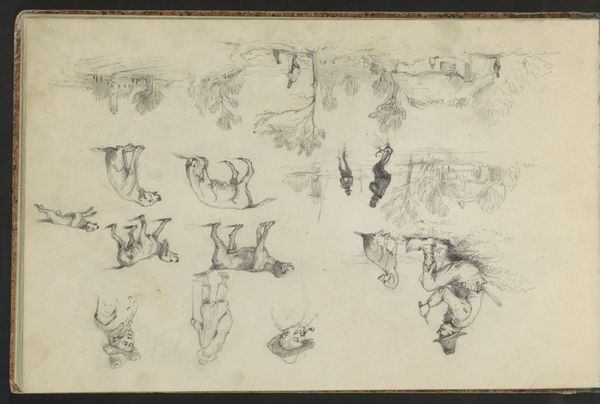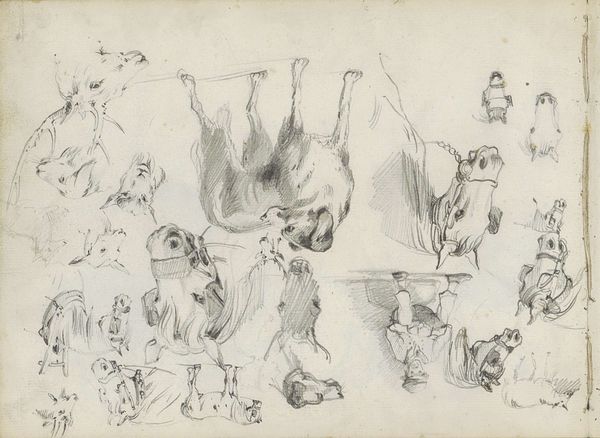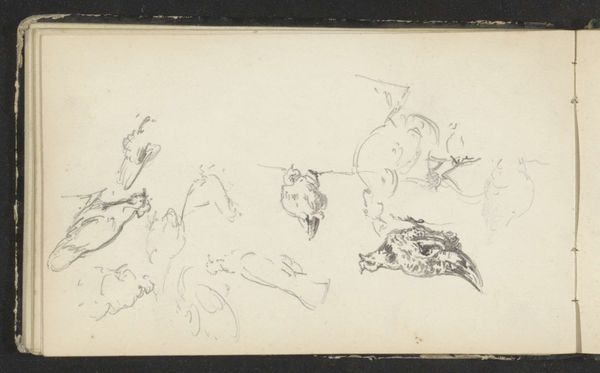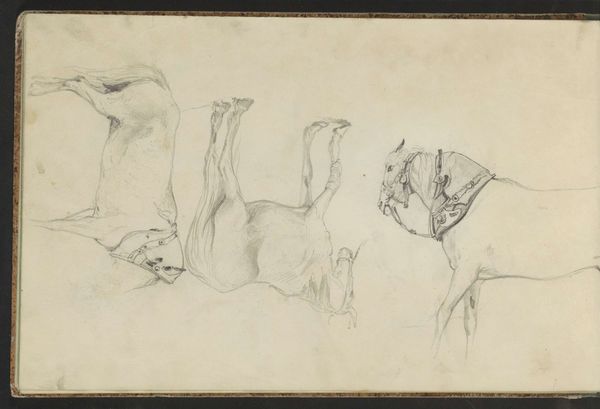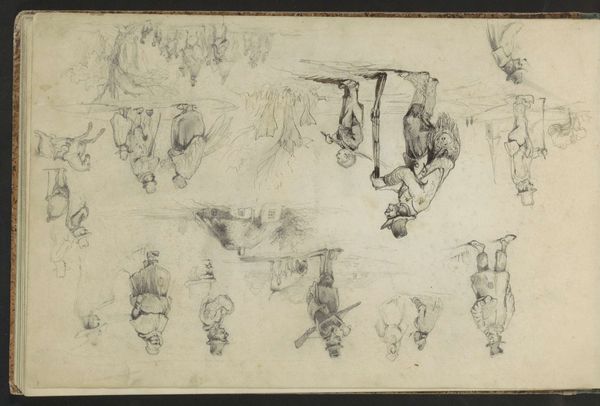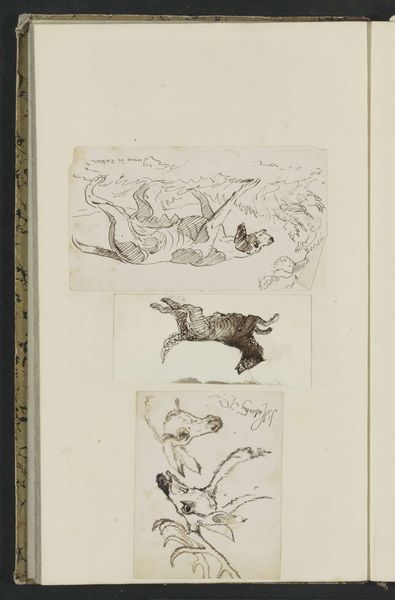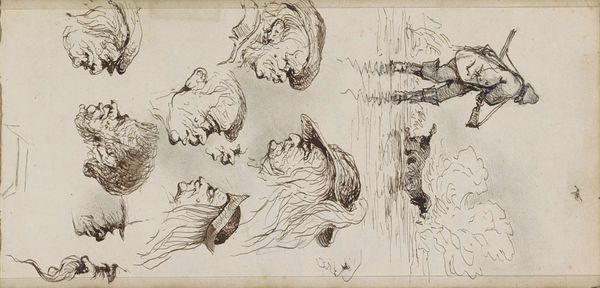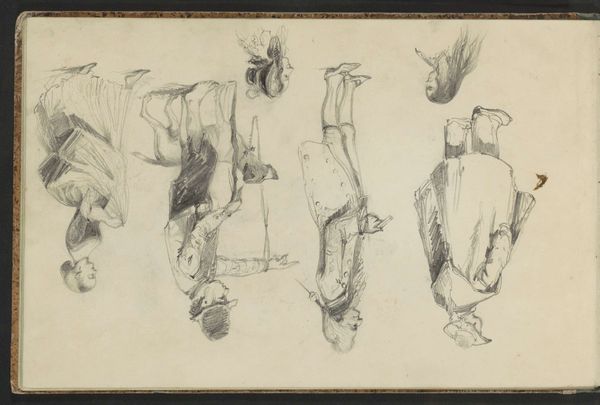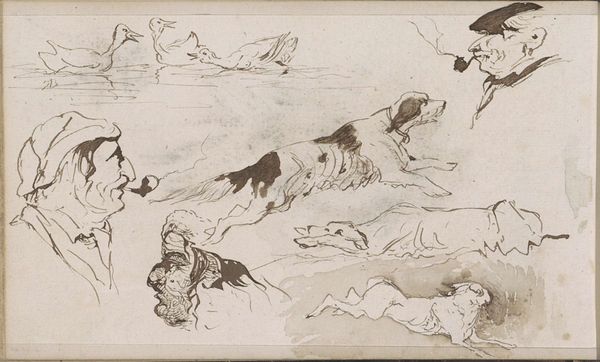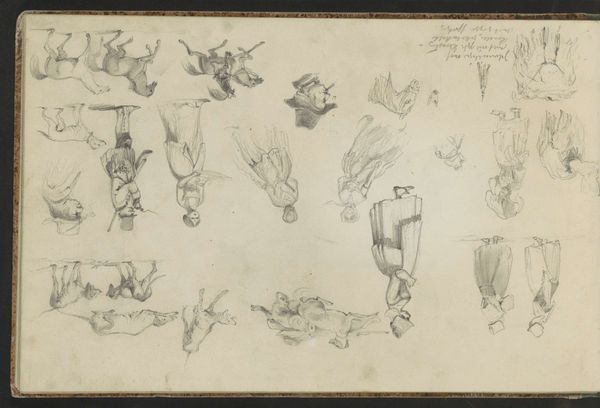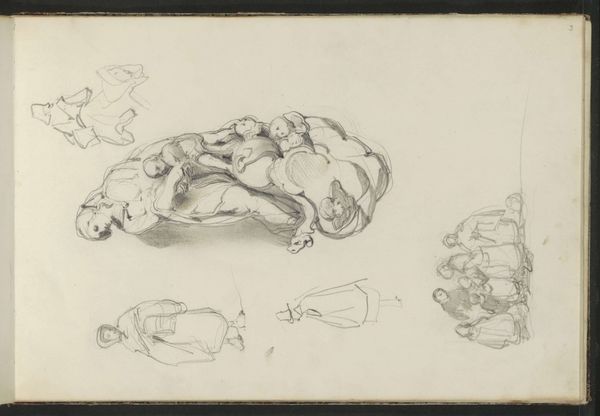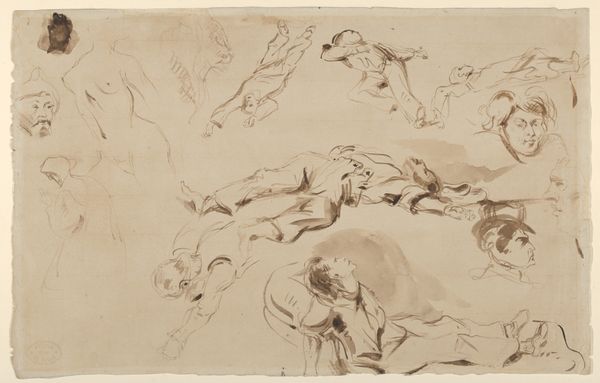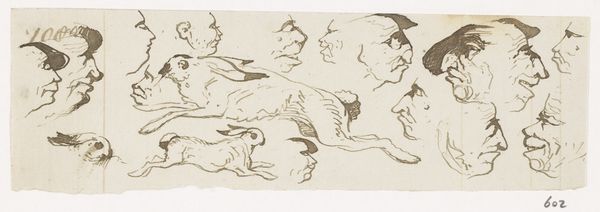
drawing, pencil
#
drawing
#
pencil sketch
#
landscape
#
rock
#
romanticism
#
pencil
Copyright: Rijks Museum: Open Domain
Curator: Right now, we're looking at a pencil drawing from around 1840 by Johannes Tavenraat, titled "Rocky Landscape with an Eagle and a Snake," currently residing here at the Rijksmuseum. What’s your first impression? Editor: Well, initially it seems rather chaotic, a jumble of disparate elements. There are upside-down pigs on the left. The whole scene appears… preparatory. Like a study sheet, not a finished statement. Curator: I get that. It feels like a collection of fragmented thoughts, a peek into Tavenraat's artistic process, as he's gathering impressions. The material quality feels very much like a sketchbook – intimate, immediate. You can almost feel the pressure of the pencil on paper. Editor: Exactly. And there's something about that sketch-like quality that disrupts the typical romanticism of the landscape. The "sublime" feels somehow…undercut, even satirized, by the inclusion of those nonchalant animals seemingly floating above a treacherous drop. It reduces that raw, overwhelming feeling to simple labor, simple construction on the page. Curator: Maybe, maybe not… Look closer. The rocky precipice with the snake poised above and the eagle swooping below definitely suggests that feeling of untamed wilderness – a favorite trope during the Romantic period. Editor: But think about the economic context, curator! Here you have the natural landscape rendered—the artist selecting and presenting a controlled experience for consumption through art markets. These are luxury items. Art isn’t separate from other forms of manual work. The materials themselves—pencil, paper, the means of producing copies, affect accessibility, democratisation. Curator: I agree that materiality plays a huge role in who has access and can participate in artistic expression. All those elements working together – the eagle as a symbol of power, the snake embodying hidden danger—capture something elemental. Plus the lack of colour places all the emphasis on tone, line, technique, like a piece of music distilled down to only melody. Editor: So the artistic gesture becomes one with natural forces then. Not unlike artisanal labour which combines technical knowledge of material qualities alongside gestures, which in a landscape represent its geography. Curator: I find myself leaving this work, pondering how Romantic ideals brush against the realities of production. There is an echo in my soul… Editor: And I leave thinking about art and commerce, craft and consumption... Food for thought.
Comments
No comments
Be the first to comment and join the conversation on the ultimate creative platform.
